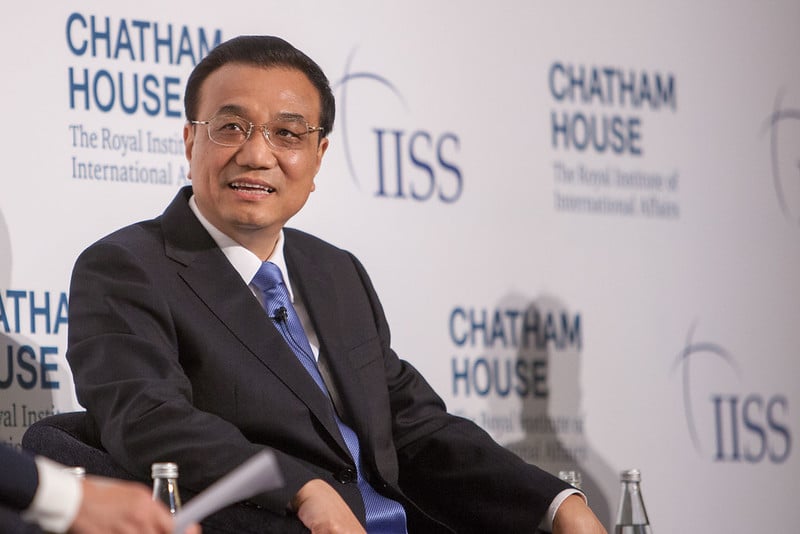At the opening of the National People’s Congress last week, China released its first roadmap to achieving net-zero emissions by 2060, but will the goals allow the world’s top polluter to mitigate climate change adequately?
—
On Friday March 5, the country released its 14th Five-Year Plan, which was laden with ways on how it intends to increase the use of renewable energy by 2025. However, Beijing didn’t set a hard target to reduce greenhouse gas emissions, nor did it bring forward from 2030 the date it expects them to peak. The goal of reducing emissions per unit of GDP by 18% by 2025 is the same as in 2016. Also by 2025, it plans to reduce energy use per unit of GDP by 13.5% and boost non-fossil fuels to 20% of energy use. China will release an action plan this year of how it will reach peak emissions by 2030.
The Five-Year Plan
Renewable Energy
China set a target for 20% of its energy needs to be met by non-fossil fuel sources by 2025, faster than its previous goal of reaching this mark by 2030, showing the immense progress of solar and wind capacity installations in recent years. Besides these sources, the country will also promote hydrogen, pumped hydropower and energy storage in the next five years. Li also reiterated China’s support for nuclear power, after it fell far short of its last 5-year plan target of having 58 GW of plants by 2020, ending up with a little under 50 instead. For the next five years, the country plans to boost the capacity of nuclear energy by 40% to 70 GW.
However, it plans to continue increasing domestic production of fossil fuels like oil and coal to improve energy security; last year, China’s coal output rose to its highest since 2015, producing 3.84 billion tonnes of coal.
Energy Efficiency
More than 100 years after countries such as the US and UK, China started industrialising its economy, so its energy consumption is still growing as others have peaked or plateaued. Instead of capping energy use, China is instead focusing on using it more efficiently. This is vital, as China accounted for more than 30% of global carbon emissions last year.
Its target of reducing energy use per unit of GDP by 13.5% is slightly lower than the 15% goal it set out in its last 15-year plan. Between 2016-2020, China reduced energy intensity by about 18%.
You might also like: Italy Raises €8.5bn in Europe’s Biggest-Ever Green Bond Debut
Energy Intensity
China wants to continue to emit less carbon per unit of GDP, but as GDP grows, so too have emissions- 9.8 billion tons in 2019. The Center for Research on Energy and Clean Air says that this needs to be 8.75 billion tons by 2025 to meet the path to carbon neutrality by 2060.
Fossil Fuels
China mines and burns half of the world’s supply of coal. While the country has reduced coal’s share of its energy mix, this has happened as total energy consumption has risen, meaning that the amount of coal being burnt hasn’t changed much since the early 2010s.
Presenting the plan, Premier Li Keqiang said that China will continue to promote the “clean and efficient” use of the fuel while pushing to develop new energy sources. Last week, the country’s coal industry goal said that it plans to increase output by 2025, and that total consumption will be slightly higher at the end of the period than in 2020.
Electrification
China plans to increase sources of electricity in the next five years; in 2018, electricity represented about 25% of total energy use. The country’s major utility says that this will rise to 30% by 2025 and 35% by 2030 as the nation expands its battery vehicle fleet.
Overall Plan
In the near-term, China is offering incremental improvements, while researching technologies such as hydrogen and battery storage that it hopes will accelerate efforts to meet its 2060 goal.
As mentioned above, more targets may come later this year, when the government is expected to release a separate five-year plan for the energy sector. A work plan to show how China aims to reach peak emissions by 2030 is also coming this year.
Alex Whitworth, head of Asia-Pacific power and renewables research at consultant Wood Mackenzie Ltd, says that while the new five-year roadmap does give China a chance of meeting both of the goals of peak emissions by 2030 and net-zero emissions by 2060, it needs to ensure a concerted effort into developing technology; failure to do so will make the job even more difficult for future generations. The world needs to reduce emissions as quickly as possible and China currently accounts for 30% of global output, making the country’s decarbonisation absolutely crucial if we are to meet the Paris Agreement goals.
Featured image by: Flickr

















